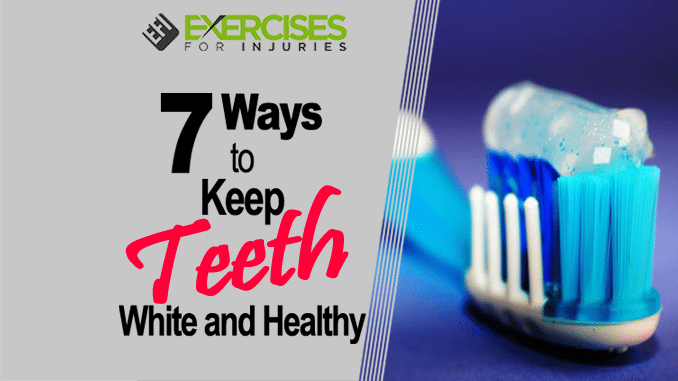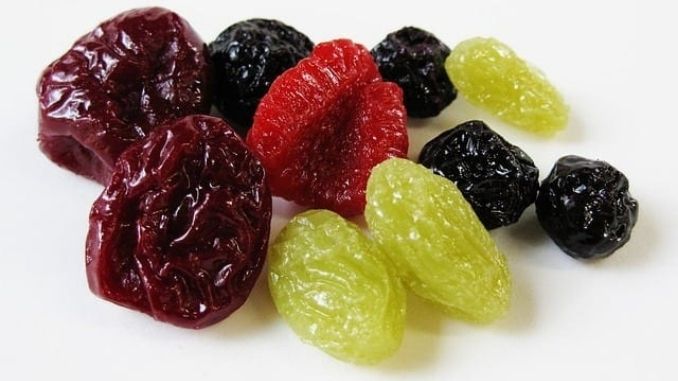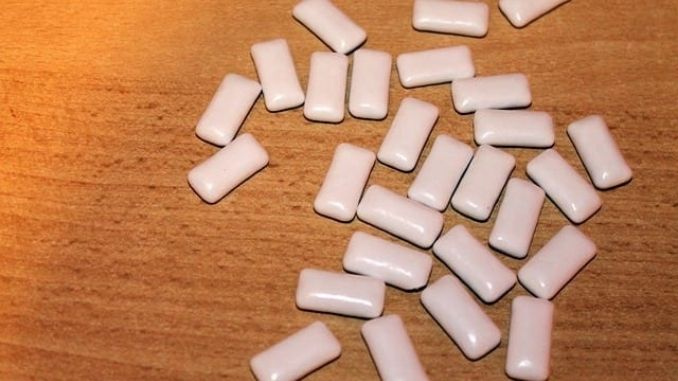
Dental health is closely linked to overall health and, according to recent studies, we all need to do more to protect our teeth and gums.
The Centers for Disease Control and Prevention (CDC) states that about a third of adults have untreated cavities. A report from the United States Department of Health and Human Services noted that most adults show signs of periodontal disease (gum disease), with severe gum disease affecting about 14 percent of adults aged 45 to 54. Older adults are even more at risk, with 23 percent of those 65 to 74 years old having severe gum disease — a problem that can lead to malnutrition.
Meanwhile, studies have linked poor oral health to high blood pressure, Alzheimer’s disease, heart disease, cancer and even premature death.
To protect your health, you should see your dentist at least once a year. However, in between dentist visits, you can do a lot at home to take care of your teeth and gums. Below are seven natural ways to improve your dental health.
1. Keep Teeth White and Healthy: Try Oil Pulling
This is a practice that started thousands of years ago in India and wasn’t introduced in the Western world until the late 1900s. Moreover, the idea is to simply swish oil in your mouth for up to 20 minutes at a time. Additionally, the type of oil can vary, from sesame to sunflower to coconut. Moreover, all of these are thought to help cut through plaque, remove toxins and even help reduce tooth sensitivity.
We don’t have substantial scientific evidence behind this method of oral cleansing, but we do have one 2016 review that concluded oil pulling can improve oral hygiene when “practiced correctly and regularly.”
Many people who have tried it also swear by its benefits. Either way, it can’t hurt you, so if you’re fighting gum disease or sensitivity or just want to see how it works for you, feel free to give it a try.
Moreover, simply place one to two teaspoons of your chosen oil in your mouth and swish in the same manner as you would swish a mouthwash. Don’t swallow. You may be able to swish for only five to 10 minutes to start, but you can gradually extend your time up to 20 minutes. Although you can use any of the oils mentioned above, a 2015 study found that coconut oil, when used in oil pulling, significantly decreased plaque and gingivitis during a period of seven days.
When you’re done, spit it out and rinse well with warm water.
2. Use Natural Whitening Ingredients
Keep Teeth White and Healthy: Keep Teeth White and Healthy: Tooth whitening products can be expensive, and they can also cause sensitivity. Moreover, you can whiten your teeth naturally with a number of ingredients you’re likely to find in your kitchen cabinet. Here are just a few that could work for you:
- Brush with baking soda
- Rinse with hydrogen peroxide
- Eat more whitening foods
When choosing foods to help whiten teeth, look to fruits. Furthermore, researchers found in a 2010 study that eating fruit every day helped remove teeth stains and kept teeth looking brighter. Moreover, after trying different fruits for about three months, results showed that strawberries, orange peels, and lemon juice were the most effective whiteners.
A later 2017 study also reported that citrus fruit was effective in whitening discolored teeth. Moreover, malic acid, as well, which is present in apples, helps remove stains and clean teeth.
3. Drink More Green Tea
Keep Teeth White and Healthy: Typically, we link tea and coffee to tooth stains, but green tea is much less likely to stain, and its benefits to oral health outweigh the risks.
Moreover, in 2009, researchers analyzed 940 Japanese participants aged 49 to 59, examining their dental health and recording their daily intake of green tea. Results showed that those who drank more green tea had a lower risk of gum disease. Other studies have found similar results.
Green tea has also been linked to reducing inflammation and, since gum disease is an inflammatory disease, it makes sense that green tea would help counteract that.
Furthermore, green tea can even help prepare you for a hot date as it banishes bad breath! Furthermore, researchers found that the antioxidants in the tea help destroy compounds in the mouth that can cause bad breath and tooth decay.
4. Indulge in a Glass Red Wine
Eek! Red wine! Doesn’t that stain?
Keep Teeth White and Healthy: Yes, it can stain your teeth, but according to research, it can also make your mouth healthier. Moreover, you’ve probably heard that a moderate intake of red wine can help reduce the risk of heart disease. That’s because the beverage is a good source of healthy antioxidants that help protect blood vessels. Scientists have also found that the plant ingredients in red wine may also help banish bad bacteria.
Furthermore, in a 2014 lab study, for example, researchers grew samples of bacteria that typically cause cavities and then dipped those samples in a number of liquids, including red wine, water, and alcohol. Moreover, they found that red wine — with and without alcohol — was the most effective at killing the bad bacteria.
An earlier study also reported that red wine was effective against Streptococcus mutans and that it made it more difficult for bacteria to stick to teeth.
But what about those stains? Moreover, you can prevent them with some simple steps:
- Brush your teeth about an hour before you drink your wine as bacteria have a harder time sticking to clean teeth
- Always eat something while you sip on the wine to help clear it from your teeth
- Moreover, try having a glass of sparkling water nearby, which can help wash away stains
- Rinse your mouth out after you finish your glass
5. Eat More Yogurt, Miso Soup and Kefir
Keep Teeth White and Healthy: You’ve heard that probiotics can help ease digestion and improve the health of your gut, overall. However, recent studies have also found that these healthy bacteria may help improve oral health too. Similar to the way green tea and red wine work, probiotics may also help clear bad bacteria from the mouth. In fact, they’re so effective that they’re now showing up in dental care products like toothpaste and mouthwash.
Moreover, in 2010, researchers looked into the connection between probiotics and oral health and found several studies linking the consumption of products with probiotics to reduced bacteria in the saliva, decreased inflammation, improved gum health and decreased gum bleeding. Probiotic chewing gum also helped decrease inflammatory markers in the saliva.
Furthermore, in a more recent study in 2017, researchers reported that probiotics had the potential to reduce cavities and other periodontal diseases by helping to reduce bacteria and restore a healthy environment to the mouth.
You can consume more foods rich in probiotics to help protect your teeth and gums. These include yogurt, kefir, miso soup, kombucha, sauerkraut, tempeh, kimchi and pickles.
6. Eat More Craisins and Raisins
Moreover, keep Teeth White and Healthy: Women who suffer from recurrent urinary tract infections are often told to drink more cranberry juice (or take cranberry supplements) to help prevent them. Cranberries are believed to help loosen bacteria so it can no longer stick to the bladder or urinary tract, making it easier to flush them out.
Furthermore, scientists believe this same “nonstick” action may work for your teeth too. Moreover, studies from the University of Rochester Medical Center found that cranberry juice acted like “Teflon for teeth,” making it harder for the bacteria to cling to them. It also helped disrupt the formation of plaque. Another study reported that cranberry extracts helped inhibit inflammation and stopped bacteria from forming its damaging film on the teeth.
Moreover, the problem is that most cranberry juice is high in sugar and sugar can negate the healthy benefits of the cranberries. Researchers are working on ways to add the natural substances from cranberry to mouthwashes and toothpaste. In the meantime, however, you can get some of the benefits by choosing low-sugar juice or by eating more dried cranberries and dried raisins.
Dried fruit is high in sugar too, but according to a 2005 study, compounds in raisins help fight the same oral bacteria that create gum disease. Moreover, raisins can actually help suppress the growth of these bacteria, reducing the risk of cavities and gum disease.
Lead author Christine Wu stated that though raisins are sticky and most people associate sticky foods with tooth decay, “Phytochemicals in raisins may benefit oral health by fighting bacteria that cause cavities and gum disease.”
7. Chew Gum (as Long as It Contains Xylitol)
Moreover, keep Teeth White and Healthy: Xylitol is a sweetener naturally found in many fruits and vegetables. It’s also manufactured from corn or birchwood and used in many types of chewing gum. Moreover, research shows that xylitol can actually help protect teeth and gums. One 40-month study of more than 1,000 subjects found that although regular sugary gum increased the risk of cavities, gum with xylitol actually reduced rates of cavities.
Another study reported that chewing xylitol gum helped decrease the number of bacteria in saliva and decreased plaque buildup on the teeth. When looking at xylitol’s effect on gum disease, researchers found that it helped reduce inflammation.
The fact that chewing gum stimulates the flow of saliva also helps protect teeth, as saliva is protective on its own, but it’s always best to choose those sweetened with xylitol so you don’t expose your teeth to bacteria-loving sugar.
For your guide to the best foods to heal your body, check out The Best Foods that Rapidly Slim & Heal in 7 Days, here!






